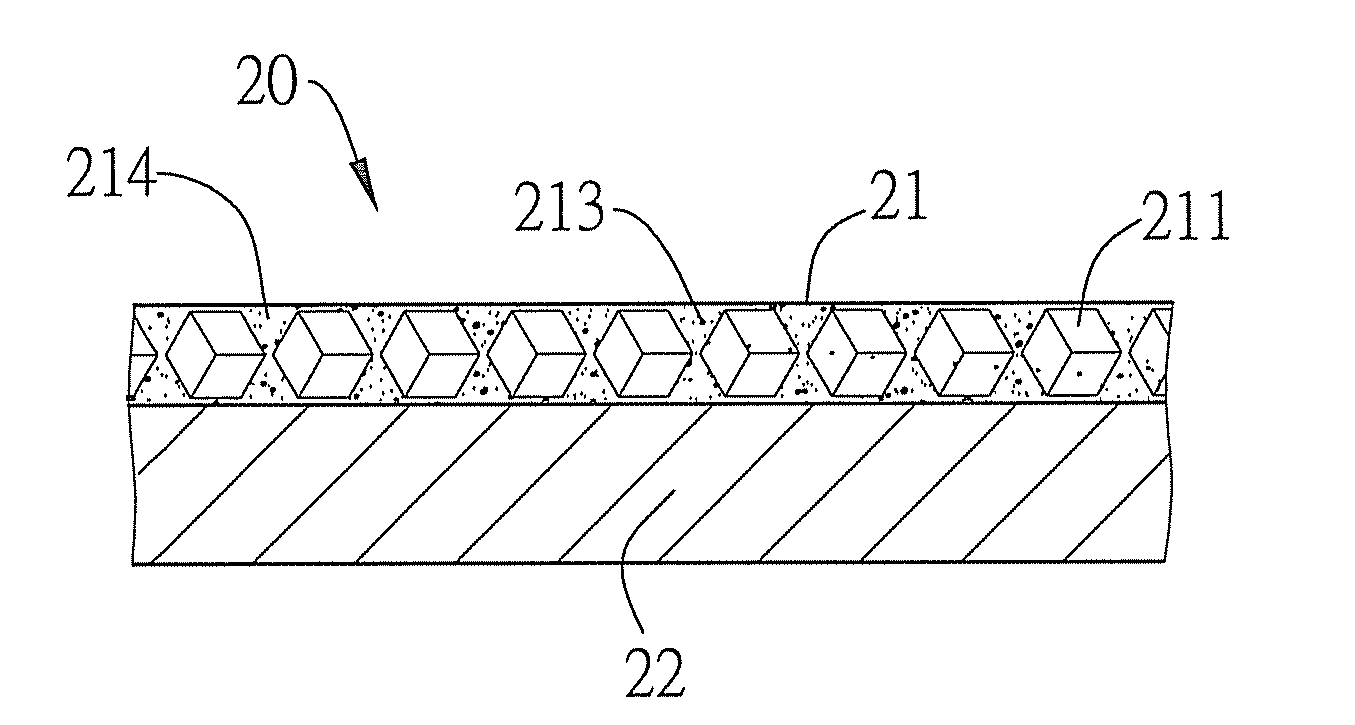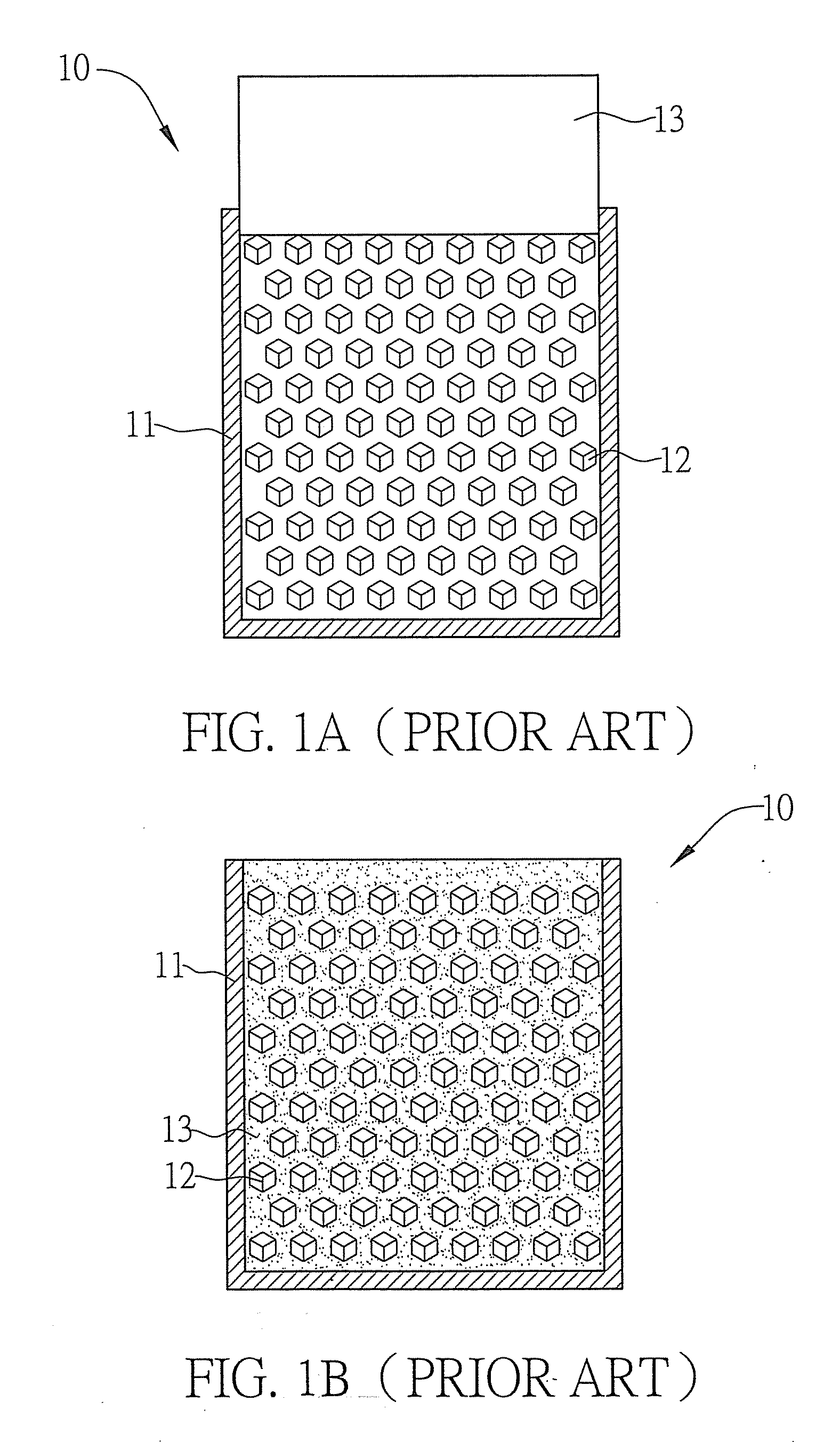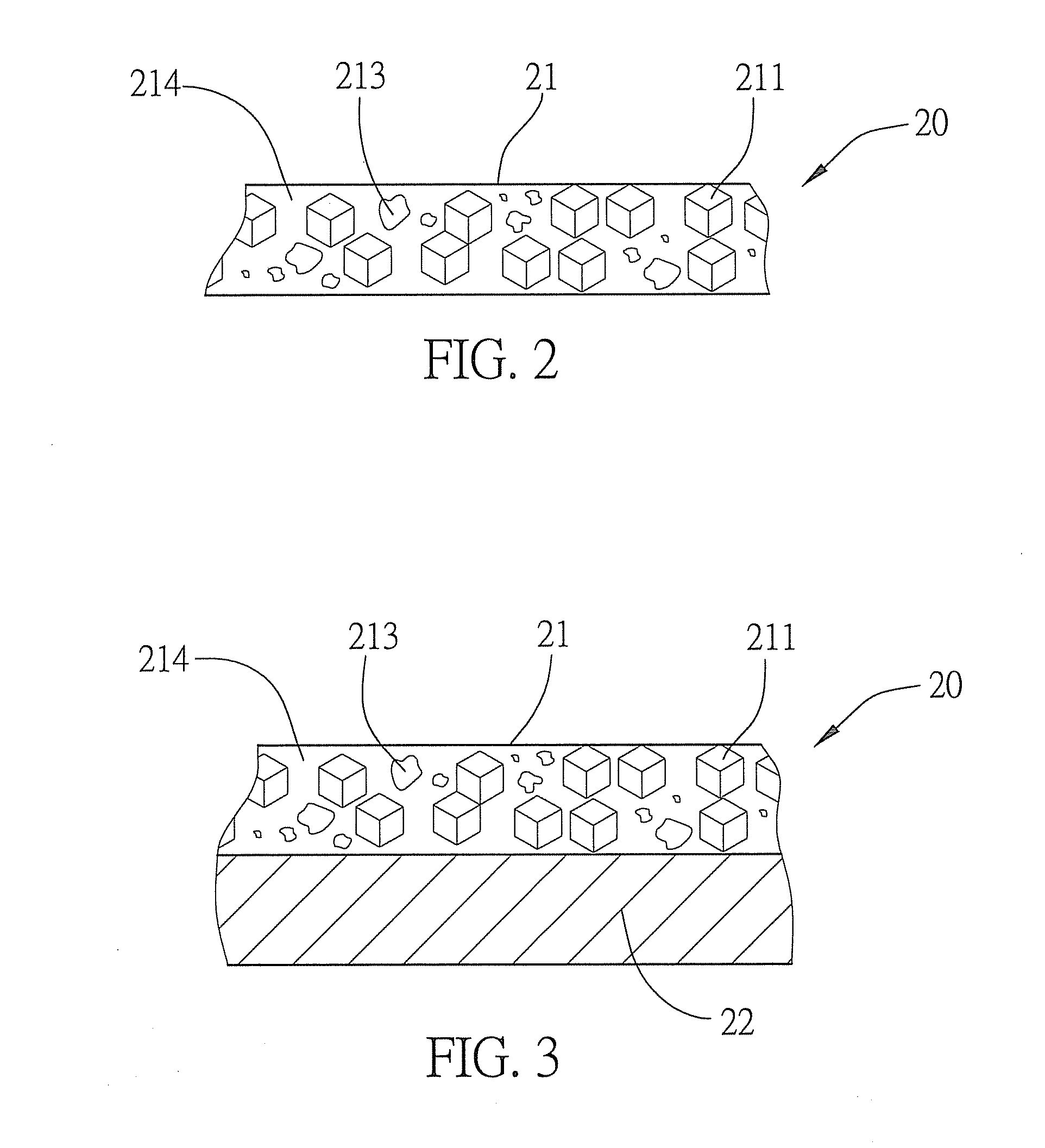Heat-dissipating structure and method for fabricating the same
- Summary
- Abstract
- Description
- Claims
- Application Information
AI Technical Summary
Benefits of technology
Problems solved by technology
Method used
Image
Examples
experimental embodiment 1
Copper powder with 70-150 mesh and diamond particles with 80-100 mesh are used. The volumetric ratio of the copper particles to the diamond particles is 6:1. Referring to FIG. 9A and FIG. 9B, pictures of a carbon composite layer of a heat-dissipating structure according to the present invention are shown when the carbon composite layer is observed with an optical microscope with 300× magnifying power. As shown in the drawings, the diamond particles are products of the Taiwan-based Fine Abrasives Coating Technology (FACT), serial no. CK-3 (as shown in FIG. 9A) and serial no. YK-J (as shown in FIG. 9B). The CK-3 diamond particles have as-grown facets. Most of the as-grown facets of the CK-3 diamond particles are of perfect shape, and the remainder are of imperfect shape. The YK-J diamond particles are crushed and thus have facets of irregular shape. Since diamond and copper powder are immiscible, in order to form a porosity structure from the diamond and copper particles sintered toge...
experimental embodiment 2
To work efficiently, the porous wick structure inside the vapor chamber requires sufficient capillarity for taking in water and sending the water to the evaporation end, and it requires an appropriate degree of porosity for the return of cool water. Hence, the wick structure is usually configured to comprise copper powder of different diameters and shapes so as to strike a balance between capillarity and porosity. Positioned proximate to the condensation end, a portion of the wick structure must have large pores to allow steam to be condensed into water and to allow the water to quickly return to the evaporation end; hence, the pores at the condensation end-adjoined portion of the wick structure should not be close to each other. By contrast, an evaporation end-adjoined portion of the wick structure must have considerable capillarity for sending water from the condensation end to the evaporation end; hence, the pores at the evaporation end-adjoined portion of the wick structure shou...
experimental embodiment 3
With diamond having a specific gravity of 3.52 and copper having a specific gravity of 8.9, the difference in the specific gravities thereof is significantly large. Also, the diamond particles differ from the copper powder in surface area. In this regard, a uniform mix and an appropriate difference in particle size are of vital importance. During the fabrication process of the wick structure, the uniform mixing of the diamond particles and copper powder is followed by filling a graphite die with powder. To allow the powder to have fine, dense pores after the sintering process and to enable tight control over the quality of the results, it is necessary to vibrate or shake the powder-filled graphite die so as to densify the powder. For instance, if the diamond particles are too large, upon vibration of the powder-filled graphite die, the diamond particles will separate from the copper powder, and thus the diamond particles cannot be held in position by the copper powder, thereby resul...
PUM
 Login to View More
Login to View More Abstract
Description
Claims
Application Information
 Login to View More
Login to View More - R&D
- Intellectual Property
- Life Sciences
- Materials
- Tech Scout
- Unparalleled Data Quality
- Higher Quality Content
- 60% Fewer Hallucinations
Browse by: Latest US Patents, China's latest patents, Technical Efficacy Thesaurus, Application Domain, Technology Topic, Popular Technical Reports.
© 2025 PatSnap. All rights reserved.Legal|Privacy policy|Modern Slavery Act Transparency Statement|Sitemap|About US| Contact US: help@patsnap.com



